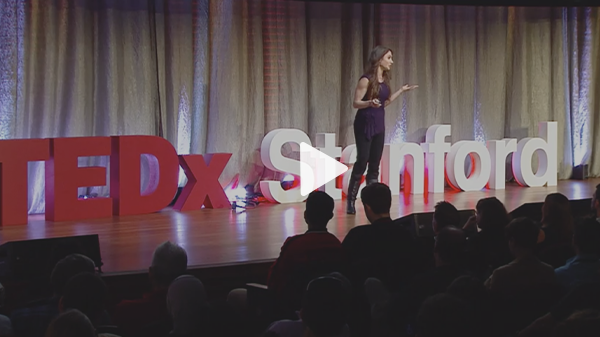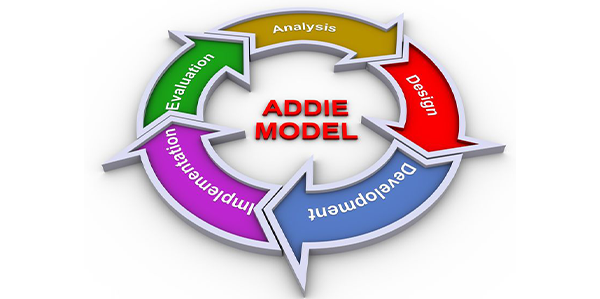Bringing TOPkit Digest to You
|
|
Contents of this Digest:
- Video Tip: Unlock the Creative Thinking Process
- Announcements: TOPkit Workshop 2021 and Innovation Summit 2021 - Registration and Proposals
- Top Tips: Foster Creativity in Our Work
- From the Community: Integrating a Creative Envelope into the ADDIE Model
- Top Community Topics
|
|
Walk to Unlock the Creative Thinking Process
Intentionally Thinking About Brainstorming a New Perspective |
|
|

|
|
Want to be more creative? Go for a walk. Marilyn Oppezzo is a behavioral and learning scientist who completed her doctorate in Educational Psychology at Stanford, in 2013. In this video, she talks about how the movement of the body can affect the movement of the mind and how to encourage creative thinking process, simply by walking. Creativity is essential to the work of instructional designers and technologists, as well as those managing faculty development programs. Marilyn also provides five tips on how to make your creative walk process the most effective.
|
|
MUST-READ ANNOUNCEMENTS
- Register for the TOPkit Workshop 2021 engaging, interactive, live virtual event to occur on Thursday, March 25th and Friday, March 26th. To present, submit a proposal by November 16, 2020.
- Register to attend the Innovation Summit 2021. This will be a live virtual event planned for Tuesday, March 23rd and Wednesday, March 24th. To be a presenter, submit a proposal by November 10, 2020.
|
|
Ways to Foster Creativity in Our Work
Produce Novel and Useful Ideas or Approaches |
|
|
|
Creativity is defined as the production of novel ideas or approaches that are also useful. In a dynamic environment, instructional designers have to be creative when working with faculty to design effective learning experiences using technology and exhibit a level of variability and complexity. Despite the need for creativity, there is a lack of research and focus on providing guidance and formally integrating creativity into ID models. Creativity is not a talent or a trait; rather, it can be nurtured. Here are eight tips on how to foster creativity in your work.
|
|
|
|
|
|
|
|
|
#1 - Look at constraints as opportunity. Every project comes with constraints: tight budgets or strict timelines. Although these obstacles can be overwhelming, you should look at them as opportunities for creativity and use these guidelines to create more effective programs or courses.
|
|
#2 - Engage in scientific improvisation to move from big picture to deep picture. When it comes to designing training content or changing course content, it is important to obtain real-time data that your LMS collects about the learner, understand it to know what works and what does not, and then use it to change the training content to meet learners’ needs and expectations.
|
|
#3 - Trust and collaborate with cross-functional teams. Set the stage for a brainstorming session by entering the team discussion with an open mind to welcome and trust ideas from new team members. Being open to new experiences will allow you to take advantage of the resources and tools others will provide and enhance diverse solutions. | |
#4 - Step into the learner’s shoes. One way to foster creativity is to look at a problem from a different perspective. For example, if you’re developing a course, look at it from the learner’s perspective to better understand the problem and the audience. This approach encourages learner-centric design through empathy, an important tenet of design thinking. #5 - Engage in divergent and convergent thinking. Divergent thinking is defined as a thought process to generate several possible solutions to a problem. The free-flowing of ideas encourages creativity. In contrast, convergent thinking is a problem-solving technique that involves bringing all ideas together to determine a single best solution. Once the free-flowing stage of divergent thinking is complete, information can be structured and organized using convergent thinking. #6 - Stay up-to-date with current technology and focus on design thinking. Take advantage of current technological tools that can make your tasks easier and more efficient. Apart from focusing on the content, also focus on the details of how it will be implemented. Use gamification to create virtual environments that mirror real-life situations to provide effective and scalable training. #7 - Prototyping. Instead of building a course to completion before asking for feedback, engage in prototyping by proactively asking for feedback and making necessary adjustments. Prototyping allows the creation of representative ideas that can be discussed, evaluated, and improved. #8 - Willingness to take calculated risks. Creativity involves the ability to go beyond the past ideas and a willingness to grow. This often requires flexibility and risk taking as you’re trying to experiment with a new approach/idea.
Kinjal Chheda, Intern (under the guidance of Amanda Major, Ed.D., Associate Instructional Designer, Center for Distributed Learning, University of Central Florida)
|
|
Integrating a Creative Envelope into the ADDIE model
Unlock Creativity at a Micro-Level |
|
|
|
Clinton and Hokanson (2011) built on the design/creative loop to re-design the ADDIE model that acknowledges the importance of creativity. On a macro level, a creative envelope surrounds the model but on a micro level, there is a room for creative expressions in every phase of the ADDIE model.
Learn more about approaches to creative thinking in the different phases of the ADDIE model. View an example of a design/creativity loop.
|
|
References for Top Tips:
Cuesta, C. (2020). Creativity in Instructional Design. Elearning Industry. Retrieved from: https://elearningindustry.com/creativity-in-instructional-design McDonald J.K., West R.E., Rich P.J., Hokanson B. (2020) Instructional Design for Learner Creativity. In: Bishop M.J., Boling E., Elen J., Svihla V. (eds) Handbook of Research in Educational Communications and Technology. Springer, Cham. https://doi.org/10.1007/978-3-030-36119-8_17References for the TOP TIPS: Oesch, T. (2017). Agile development and improv: Helping instructional designers become more creative and flexible. Training Industry, Inc. Retrieved from: https://trainingindustry.com/articles/content-development/agile-development-and-improv-helping-instructional-designers-become-more-creative-and-flexible/
|
|
References for Community Tip:
Clinton, G., & Hokanson, B. (2011). Creativity in the training and practice of instructional designers: The design/creativity loops model. Educational Technology Research and Development. Doi:10.1007/s11423-011-9216-3 Malamed, C. Creativity and Instructional Design. The elearning Coach. Retrieved from: http://theelearningcoach.com/elearning_design/creativity-and-instructional-design/
|
|
Content Coordinator and Contributor
Kinjal Chheda, Intern (under the guidance of Amanda Major, Ed.D., Associate Instructional Designer, Center for Distributed Learning, University of Central Florida); Student, M.S., Industrial Organizational Psychology, UCF; B.S., Psychology, minor in Biological Sciences, Florida Institute of Technology
Editors
Bren Bedford, MNM, Web Project Analyst, Center for Distributed Learning, University of Central Florida
Samantha Richardson, B.A. English, Communications Specialist, Pegasus Innovation Lab, Center for Distributed Learning, University of Central Florida
|
|
|




